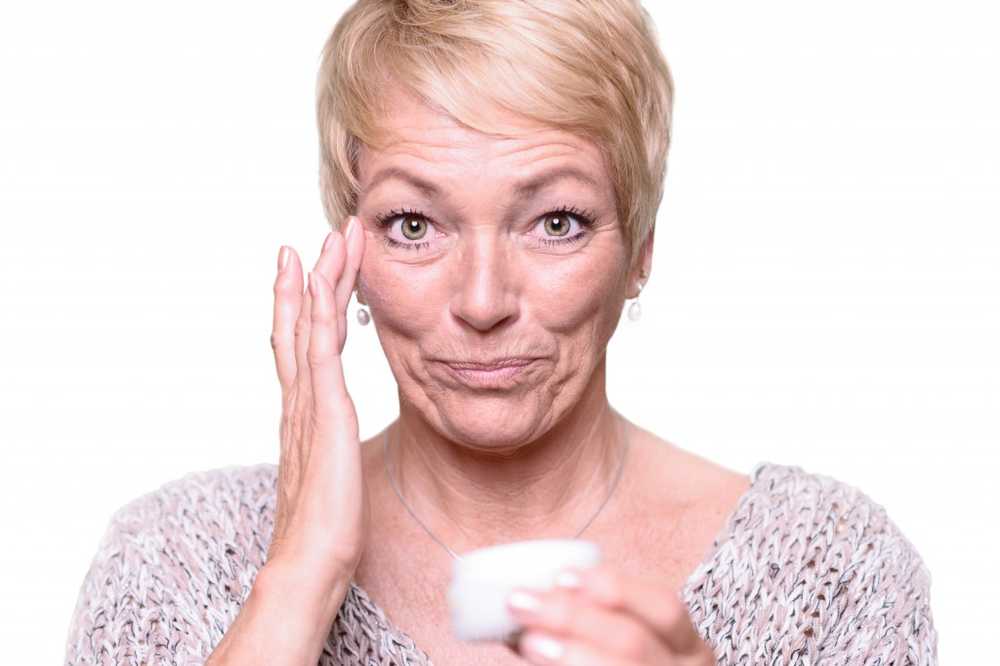Stiftung Warentest All anti-wrinkle creams had no visible effect on the wrinkles

A youthful look into old age is a wish of many people. A supple, wrinkle-free skin is one of the most widely used ideals of beauty and the cosmetics industry offers numerous products that are supposed to help one. Special anti-wrinkle creams promise to improve the appearance of the skin with secretive substances such as Coenzyme Q10 and Pro-Retinol A, but according to a recent test by Stiftung Warentest, none of the products keeps its promise. "Our test destroys this hope mercilessly: Visible-bar anti-wrinkle creams do not work", so the statement of the Stiftung Warentest.
According to the manufacturers, the anti-wrinkle creams should contribute to a visible reduction in wrinkles. The Stiftung Warentest has examined this promise more closely and examined the faces of women before and after use with the aid of a special photo box. The result is disappointing: No tested anti-wrinkle cream could cause a visible reduction in wrinkles. "Whether cheap or expensive, whether branded or drugstore product - no cream in the test can magic away wrinkles," according to the Stiftung Warentest.
 All tested anti-wrinkle creams achieve no visible reduction in wrinkles. (Image: Lars Zahner / fotolia.com)
All tested anti-wrinkle creams achieve no visible reduction in wrinkles. (Image: Lars Zahner / fotolia.com) Women with high confidence in anti-wrinkle creams
With age, the formation of wrinkles is completely natural, but these are often perceived in the face as little aesthetics and women in particular often resort to appropriate care products to achieve a reduction in facial wrinkles. According to a survey conducted by Stiftung Warentest, many women trusted in anti-wrinkle creams. Nearly every second respondent was convinced that the creams visibly reduce wrinkles, reports Stiftung Warentest. According to the advertising claims of the manufacturer that should actually be so. However, the reality is very different. A visible reduction in wrinkles was not found in the current study.
240 women have tested the anti-wrinkle creams
The Stiftung Warentest. has tested nine anti-wrinkle creams with prices ranging from 2.45 euros to 87 euros on their visible effect against wrinkles. A total of 270 women were creamed for four weeks in the morning and evening with the anti-wrinkle creams for the test. In each case 30 women received the same test product, which they applied to one half of the face, while the other half used a good moisturizer. Before and after the test phase, both halves of her face were photographed using a special photo box.
For the assessment, the experts use sections of the eye areas, as the wrinkles are usually the strongest here. The comparison of the images took place without knowing which images were taken before or after the test phase or whether the test subjects had used the test product or the moisturizer, explains Stiftung Warentest. In addition, the skin moisture was determined by means of a so-called Corneo-meter.
Promotional promises are not held by any manufacturer
According to Stiftung Warentest, manufacturers are attracting promising advertising slogans such as "fine lines are visibly reduced" (Diaderme) or "visibly reduced lines in 14 days" (Olaz). But the sobering conclusion of the test was that "none of the creams could sooth small wrinkles or even deeper wrinkles so that the naked eye could see an improvement," says Stiftung Warentest. All anti-wrinkle creams would have cut off in the crucial checkpoint only with "poor".
Only in some women has an improvement of the fine wrinkles under the eye shown, but no reduction in the rough wrinkles. In addition, in other individual cases, an increased expression of wrinkles was found when using the creams.
Most expensive cream itself unsuitable as a moisturizer
According to the Stiftung Warentest, the manufacturers claim that their advertising promises are based on evidence of efficacy other than the actual visible skin changes. For example, the wrinkle expression before and after the application is classified by a dermatologist on the basis of a scale or determined by a three-dimensional method. In the latter case, however, improvements at fractions of millimeters are measurable at best, which are not visible to the naked eye, reports Stiftung Warentest.
"If creams advertise visible effects, they also have to be visible," the testers continue. In addition, a good cream should provide the skin, according to the experts in principle, with sufficient moisture. But the "most expensive anti-wrinkle cream (87 euros) in the test, Advanced Time Zone of the US cosmetics company Estée Lauder, did not even manage that," according to the Stiftung Warentest. On the other hand, the creams of Lancaster and Nivea enriched the skin very well with moisture. A comparable effect, however, can also be achieved with a classic moisturizer without anti-aging effect - for significantly less money.
According to the Stiftung Warentest, it is above all the lifestyle that is decisive for the skin appearance, not the anti-wrinkle cream used. Enough sleep, no nicotine, drink a lot. (at least 1.5 liters of water or juice spritzers), consume a lot of fruits and vegetables as well as adequate UV protection are important principles here to get as long as possible a wrinkle-free skin. In addition, the excessive youth delusion is inappropriate anyway and the facial wrinkles should be accepted as a natural part of the age. (Fp)


